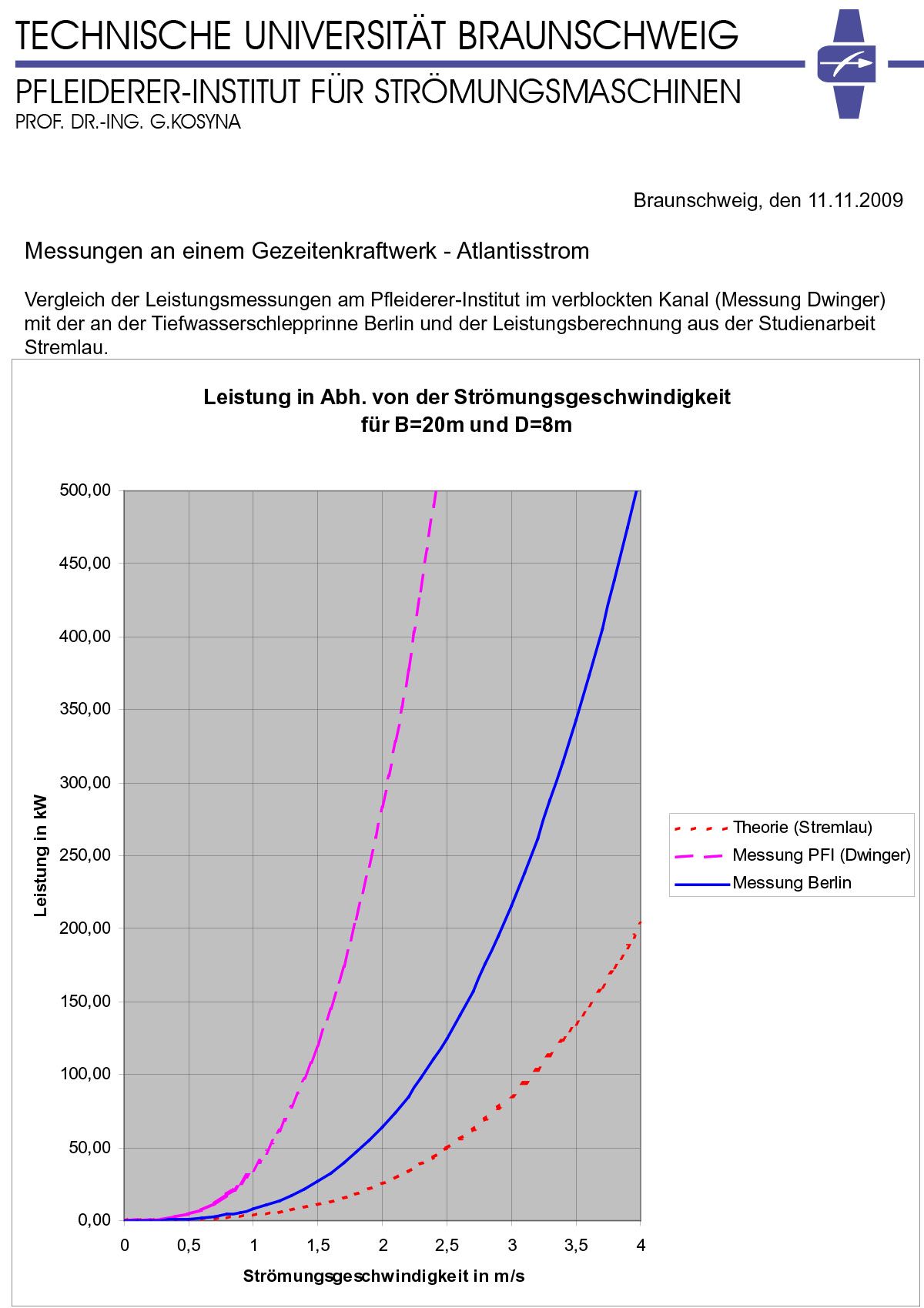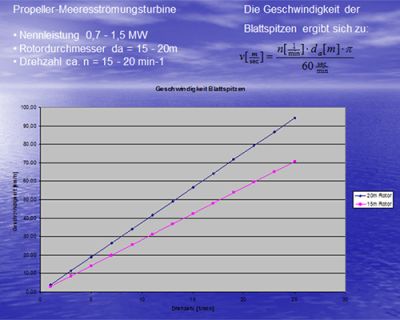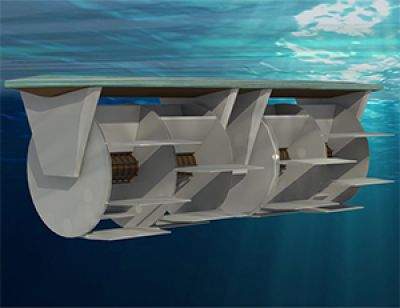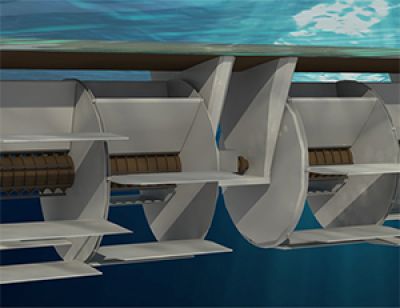Summary, outlook, sale
After we had mathematically proven the feasibility in several study papers in cooperation with the PFI of the TU Braunschweig, the practical feasibility of our concept was also demonstrated by the construction and testing of a 1/10 scaled-down prototype at the Eidersperre and at the Okertalsperre, as well as under a ship.
With the values determined during these test runs, another prototype was built in the workshop of the TU Braunschweig in order to optimize the Atlantis flow concept in flow and towing channel tests as part of a further study work. In the flow and towing channel tests at the TU Braunschweig and the FU Berlin, the tidal power plant was improved in terms of the number and weight of the blades and the shape.Furthermore, the exact performance data of the power plant in different installation situations could be determined, see graphic.
With the data acquired in this way, we were able to start construction of the full-size tidal power plant on the Faroe Islands.
- Due to the particularly environmentally friendly components of our tidal power plant, we were able to obtain an installation permit from the environmental authority on the Faroe Islands after a short time.
- All Atlantisstrom bearings and the generator are lubricated with seawater and are therefore oil-free.
- The gearbox was operated with cooking oil..
- All other components could be manufactured on the Faroe Islands and consist of normal shipbuilding steel.
- Our tidal power plant could be permanently anchored in the Vestmannafjord very easily and inexpensively with the help of anchor chains and steel cable connections, which in turn were screwed to steel rods in the rocky shore.

The series version with a length of 20 m and a diameter of 8 m was tested by the TU Braunschweig in the flow channel and by the FU Berlin in the towing channel and the expected performance was calculated. You can see this calculation under the item "Trials at the TU Braunschweig and FU Berlin".
As an investor, why should you be excited about this invention?
In contrast to the previously realized tidal power plants, our concept has a number of decisive advantages that give this completely new type of power plant enormous market potential
1. In contrast to rotor power plants, the plant works completely submerged. It therefore neither hinders shipping nor disturbs the appearance of the water. Depending on the speed of the ocean currents, our tidal power plant rotates only three to five times a minute
2. As a result, the steel flaps move through the water at a maximum of 15km/h; when the generator is loaded, the speed is even lower. In contrast, the speed of the moving parts is more than four times higher in all rotors. Furthermore, the lower part of our facility is always open for creatures to swim through. That is why our system practically does not harm living creatures that swim through. As a result, we received the building permit from the Faroe Islands within a few weeks.
3. The main advantage of Atlantisstrom are the much lower manufacturing costs compared to rotor concepts due to the simple and low-maintenance design and the use of close-to-production components such as gears, generators and frequency converters.

4. We have offers for all components, which we are happy to make available to potential buyers. This brings us to total costs of 2 million euros - (for a four-segment system with a length of 20 m and a diameter of 8 m). This amount corresponds to less than a tenth of the sum that is roughly estimated as construction costs per kilowatt for rotor power plants. Because the Atlantis current concept includes a new type of resistance rotor, which, to our knowledge, is the only one that enables electricity to be generated from tidal power at market prices.
5. If our power plant is installed in a blockage situation, e.g. in dams at the Delta Works in Holland, a particularly high energy yield can be expected.





